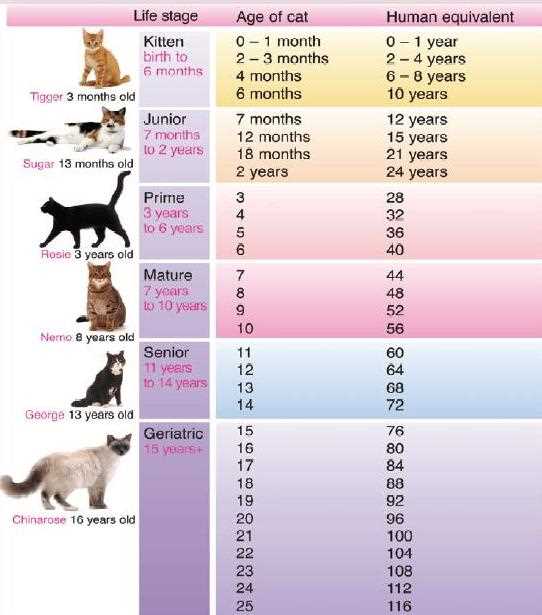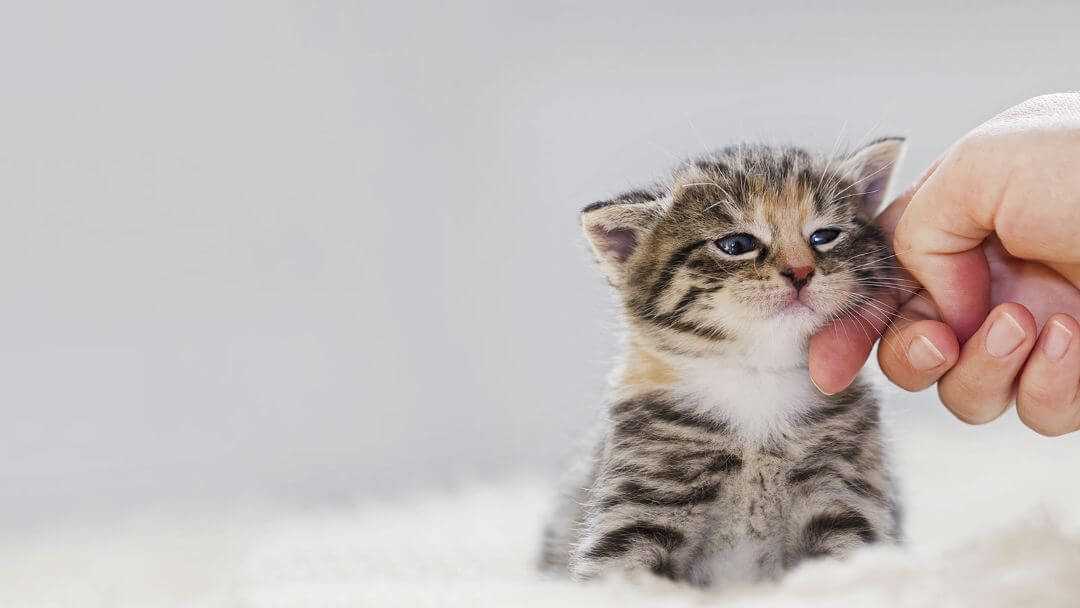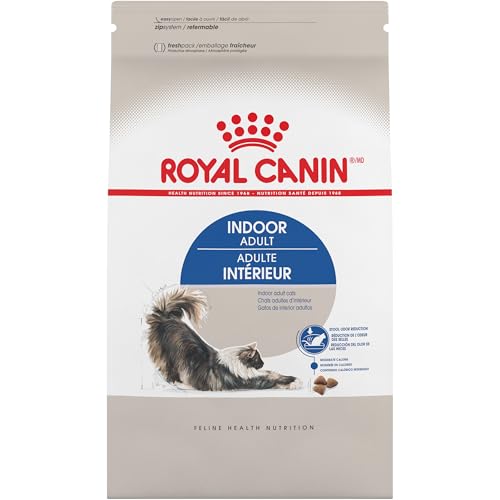



At around one year old, I transitioned from my playful, curious days of being a small furball to a more composed adult. While the definition varies, most of my fellow felines make this shift by the time they reach twelve months.
During this period, you’ll notice significant changes in behavior. The playful antics that once filled my days start to evolve into a calmer demeanor. I may still enjoy playtime, but my energy levels become more balanced, allowing for longer naps and less chaotic zoomies around the house.
Physical growth also plays a role. By the end of the first year, most of us achieve our full size. However, some breeds may take a bit longer to fully mature, often extending into the second year of life. Observing these subtle shifts can help you understand when your little companion is officially stepping into adulthood.
Determining the Transition from Youth to Adulthood
By the time I reach 12 months, I’m officially considered an adult. This marks the end of my playful, carefree days as a young one. During this first year, I undergo rapid development, both physically and behaviorally. It’s fascinating how those early months shape who I become.
Developmental Milestones
Throughout my early months, I experience significant changes:
| Month | Physical Changes | Behavioral Changes |
|---|---|---|
| 1 | Eyes open, beginnings of coordination | Exploring surroundings, initial social interactions |
| 3 | Growing teeth, increase in activity | More playful, developing hunting instincts |
| 6 | Reaching full size, adult coat development | Increased independence, refining social skills |
| 12 | Fully grown | Establishing adult behaviors, territorial instincts |
Behavioral Expectations

As I transition into adulthood, my behaviors change significantly. I become more composed and less prone to the wild antics of my younger days. While I still enjoy playtime, it’s more refined, focusing on interactive toys rather than frenetic chases. Social interactions also shift; I might prefer spending time lounging in sunny spots rather than engaging in constant play with siblings or humans.
Understanding these changes helps my humans adjust their expectations, ensuring a balanced life that accommodates my evolving personality. As I settle into adulthood, I embrace a new rhythm that emphasizes comfort and companionship over the chaos of youth.
Understanding the Growth Stages of Young Felines

To identify the phases of growth in young felines, observe the following key milestones:
Birth to 4 Weeks
- Newborns are entirely dependent on their mothers.
- Eyes open around 7-10 days; they start to explore their surroundings.
- Begin socializing with littermates, which is crucial for behavioral development.
4 to 12 Weeks
- Weaning occurs, transitioning from milk to solid food.
- Play becomes essential for learning hunting skills.
- Personality traits start to emerge, and socialization with humans should be encouraged.
3 to 6 Months
- Rapid growth in size and weight is evident.
- Teething begins, leading to discomfort; offer appropriate chew toys.
- Start exploring independence, but they still need guidance and boundaries.
6 to 12 Months
- Most will reach sexual maturity, so consider spaying or neutering.
- Playtime remains vital for physical health and mental stimulation.
- Behavioral patterns solidify; social interactions become more defined.
Understanding these stages helps in providing proper care and ensuring a smooth transition into adulthood. For instance, during the teething phase, it’s beneficial to know that certain cleaning tools, like a stainless steel scrubber, can be handy for keeping their environment tidy and safe. Recognizing these growth phases allows for tailored care and nurturing, setting the foundation for a well-adjusted adult.
Physical Development Milestones by Age
At six months, my playful side kicks into high gear. I’ve gained strength and agility, making me quite the little athlete. My coordination improves, allowing for impressive leaps and swift sprints.
By nine months, I’m transitioning into a more mature phase. My body is filling out, and I’m becoming more graceful. My playful antics might slow down a bit, but I still enjoy a good chase. It’s a perfect time for exploring new environments.
At twelve months, I’ve reached full size. My physical development is complete, and I can finally show off my unique personality. This is also the ideal period for establishing routines, including exercise and playtime. Keeping active helps maintain my health as I settle into adulthood.
From one to two years, my energy levels might fluctuate, but I stay curious and playful. I still love to engage in activities that stimulate my mind and body. Regular vet check-ups are important during this time to ensure I’m thriving.
After two years, I settle into my adult self. My physical milestones are behind me, but my spirit remains lively. At this stage, I appreciate cozy places, and my playful moments become more selective and strategic. It’s a good time for bonding with my human companions through play and affection.
Behavioral Changes as Felines Mature

By the time I hit my first birthday, I noticed some significant shifts in my behavior. Those playful antics that defined my early days gradually transformed into more sophisticated interactions. The urge to chase everything that moved morphed into a preference for observing my surroundings from a cozy spot. I became more discerning about my playtime, often opting for interactive toys that stimulate my mind rather than just chasing after anything that rolls.
As I entered my adult phase, my socialization patterns also changed. While I still enjoy the company of my human friends and fellow pets, I developed a stronger sense of independence. Those hours of pouncing and wrestling became less frequent, replaced by moments of quiet contemplation or leisurely lounging in the sun. I started to appreciate my personal space more, seeking out solitude when I needed a break from the hustle.
One notable behavior that emerged was my instinct for routine. I began to thrive on predictability, enjoying established feeding times and designated play sessions. This shift helped me feel more secure, and I became more vocal about my needs, often reminding my humans when it was mealtime or playtime.
As I matured, I also became more selective about my litter box preferences. An efficient setup became crucial for my comfort and well-being. For those who might have similar preferences, I highly recommend checking out the best litter box for high peeing cats to ensure a pleasant experience.
Overall, these behavioral transitions have made me a more refined and self-aware feline companion. Embracing this maturity has allowed me to build a stronger bond with my humans while enjoying my independence.
Health Considerations for Young Felines
Regular veterinary check-ups are critical for those in their formative years. Vaccinations should be kept up to date to prevent common diseases.
- Initial vaccinations typically occur around 6-8 weeks.
- Booster shots are essential at 12 and 16 weeks.
Parasite prevention is equally important. Discuss options for deworming and flea control with your vet to establish a suitable regimen.
Nutrition plays a significant role in development. High-quality, age-appropriate diets ensure proper growth and energy levels. Look for foods rich in protein and essential nutrients.
- Wet food can aid hydration.
- Dry kibble promotes dental health.
Behavioral observations are key indicators of health. If there are sudden changes in activity or appetite, consult a veterinarian. Early intervention can address underlying issues before they escalate.
Socialization is equally crucial. Introduce them to various environments, people, and other pets to foster confidence and reduce anxiety later in life.
Exercise is vital for physical and mental well-being. Interactive toys and playtime help maintain a healthy weight and stimulate cognitive functions.
- Daily play sessions should last at least 15-30 minutes.
- Rotate toys to keep things fresh and exciting.
Dental care should not be overlooked. Starting a dental routine early reinforces good habits for the future. Consider brushing their teeth or providing dental treats designed to reduce tartar buildup.
In conclusion, focusing on comprehensive health measures from the outset will create a solid foundation for a happy, thriving life. Regular vet visits, proper nutrition, exercise, and socialization will significantly contribute to their overall wellness.
Transitioning from Kitten to Adult Cat Care
As I matured, I discovered that adjusting to new care routines made a significant difference in my life. At around one year old, I transitioned from playful antics to a more relaxed demeanor. During this time, it’s essential to modify feeding practices. I recommend switching from kitten food to high-quality adult nutrition to support my changing energy needs.
Regular veterinary check-ups became increasingly important. I began to receive vaccinations specific to adult felines and monitor for health conditions that can appear as I get older. It’s advisable to discuss dental care during these visits, as dental health can greatly impact overall well-being.
Behavioral Adjustments
With maturity, I noticed a shift in my social habits. Playtime became more about engaging with toys that stimulate my instincts rather than sheer exuberance. I suggest introducing puzzle feeders to keep the mind active and to provide enrichment while maintaining a healthy weight.
Establishing a consistent routine for play and rest helps to manage stress. Adult cats often appreciate a quieter environment, so creating a peaceful space can enhance comfort levels.
Grooming and Maintenance
As I matured, grooming needs also evolved. Regular brushing became essential to manage shedding and maintain a healthy coat. I found that incorporating this into my routine not only keeps me looking good but also strengthens the bond with my human. Additionally, monitoring litter box habits is crucial, as changes can indicate health issues. Keeping an eye on these signs allows for prompt action if necessary.
In summary, adapting care routines as I transitioned into adulthood was key to my health and happiness. By focusing on nutrition, health check-ups, behavioral shifts, and grooming, my human and I created a harmonious living environment that supports my new lifestyle.










